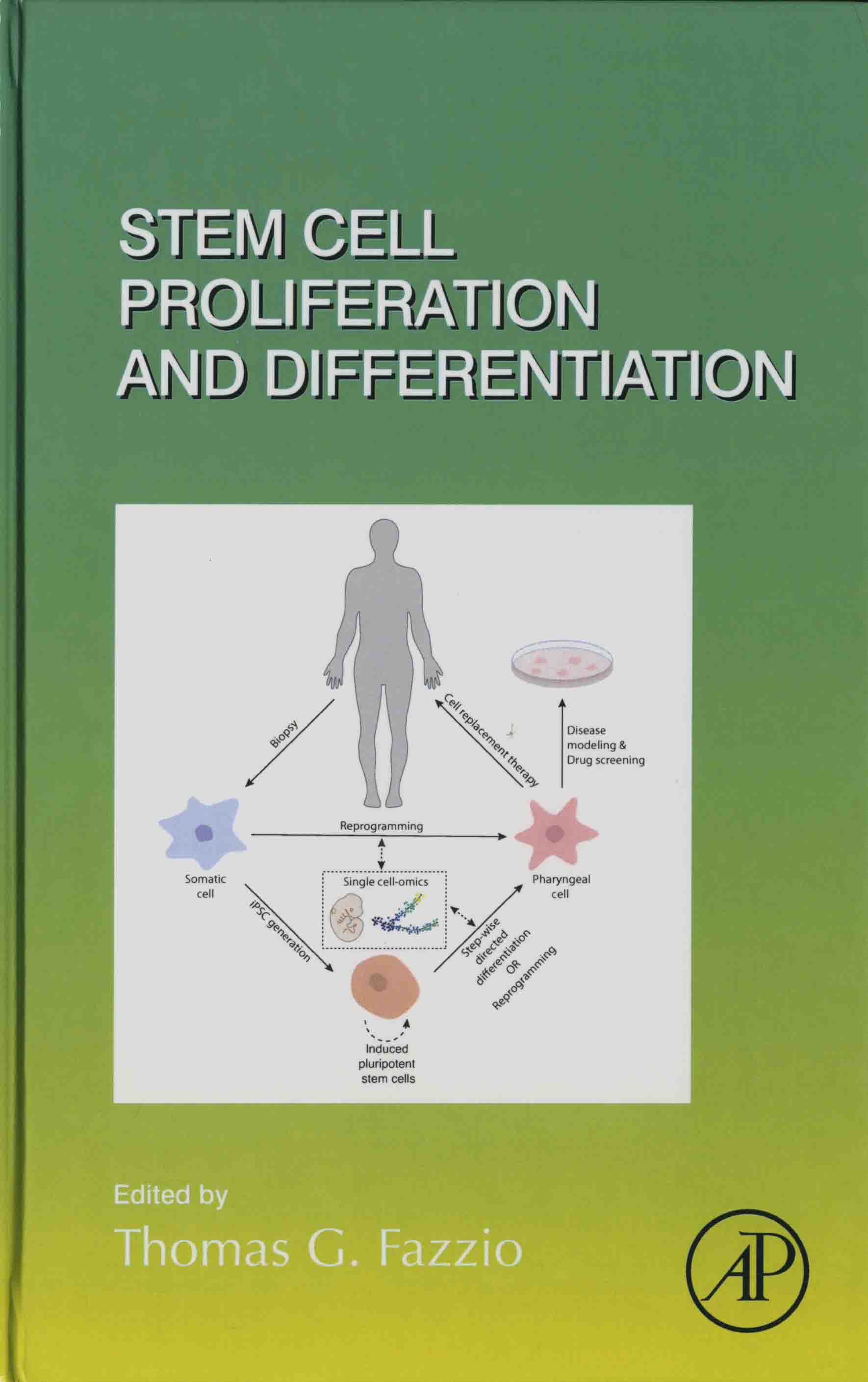 |
Current topics in developmental biology. Volume 138, Stem cell proliferation and differentiation / edited by Thomas G. Fazzio. -- Cambridge, MA : Elsevier/Academic Press, 2020. – (58.12 /C976 /v.138) |
Contents
Contributors
Preface
1. Chromatin regulation and dynamics in stem
cells
1.
Chromatin compaction, structure, and function
2.
Chromatin dynamics regulate gene expression
3.
ATP-dependent nucleosome remodeling complexes establish and maintain chromatin
state
4.
Histone modifications provide an additional layer of gene regulation
5.
Histone chaperones and histone variants regulate chromatin structure
6.
Histone H2A variants
7.
Histone H3 variants
8.
Histone chaperones
9.
Chromatin structure is dynamic and highly regulated
10. Stem cell chromatin is dynamic and tuned
to regulate cell fate
11. ES cells carefully regulate their chromatin via specialized
transcription factors
12. Embryonic stem cell chromatin is poised for action
13. Histone modifications are specifically regulated in stem cells to
maintain pluripotency and facilitate differentiation
14. Chromatin state is precisely regulated by nucleosome remodeling
factors in ES ceils
15. Long-range chromatin interactions are critical for regulation of pluripotency
16. ES ceils regulate chromatin by common processes to preserve
pluripotency
Acknowledgments
References
2. Role of IncRNAs in stem cell maintenance
and differentiation
1.
Introduction
2.
Origin of noncoding RNAs
3.
Core regulatory circuit in ESCs
4.
LncRNAs: New determinants of ES cell fate
5.
Long noncoding RNAs (IncRNAs) and their biological function
6.
Discovery of IncRNAs: From sequences to function
7.
Long noncoding RNAs and epigenetic regulation
8.
Dissecting functional IncRNAs from transcriptional noise
9.
LncRNAs in ESC pluripotency and somatic cell reprogramming
10. LncRNAs play a role in the differentiation of pluripotent stem cells
11. LncRNAs regulating the epigenome
12. The role of IncRNAs in dosage composition
13. LncRNAs implicated in imprinting developmentally associated genes
14. LncRNAs regulating signaling pathways in ESCs
15. LncRNAs regulating organ development
16. LncRNAs affecting neural development
17. LncRNAs regulating organogenesis
18. Cellular localization and maturation of IncRNAs
19. LncRNAs regulating the stability and functions of other RNAs
20. LncRNAs functioning in protein modification pathways
21. Mechanisms of IncRNA: DNA/RNA interaction
22. Allosteric regulation of proteins by IncRNAs
23. Single cell analysis of IncRNA functions
24. LncRNAs in disease progression
25. LncRNA knockouts often show lack of phenotype: The importance of
context and redundancy
26. Conclusions
References
Further reading
3. Regulation of pluripotency and
reprogramming by RNA binding proteins
1.
Pluripotency and reprogramming
2.
RNA binding proteins
3.
RNA helicases and DEAD-box helicase family
4.
Conclusions
Acknowledgments
References
4. Generating primed pluripotent epiblast
stem cells: A methodology chapter
1.
Introduction
2.
Materials
3.
Methods
4.
Discussion
5.
Recipes
6.
Notes
Acknowledgments
References
5. Differentiation of human pluripotent stem
cells toward pharyngeal endoderm derivatives: Current status and potential
1.
Introduction
2.
Overview of the pharyngeal apparatus formation within the gut tube
3.
Pharyngeal endoderm development and lineage specification within the pharyngeal
pouches
4.
Pharynx derivative pluripotent stem cell differentiation protocols: Current status
5.
Applications of hPSCs for studying pharyngeal endoderm development and disease
6.
Future directions for hPSC differentiation approaches toward pharyngeal derivatives
7.
Concluding remarks
Acknowledgments
References
6. Epigenetic metabolites license stem cell
states
1.
Introduction
2.
Stem cell energetics
3.
Metabolism of quiescent stem cells
4.
Metabolism of active stem cells
5.
HIF, the master regulator of metabolism
6.
Epigenetic signatures and epigenetic metabolites
7.
Conclusion
Acknowledgments
References
Further reading